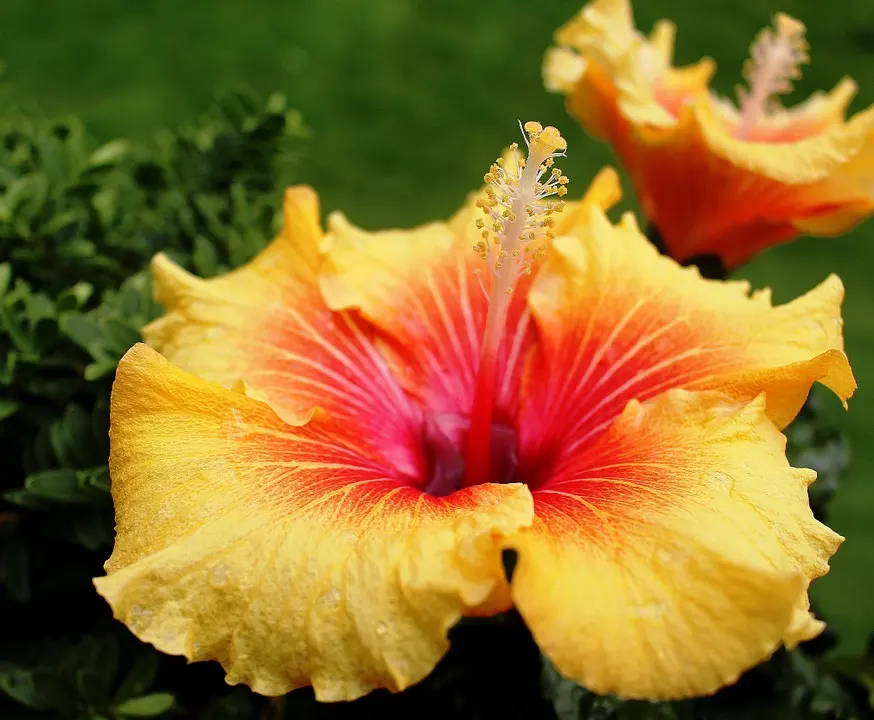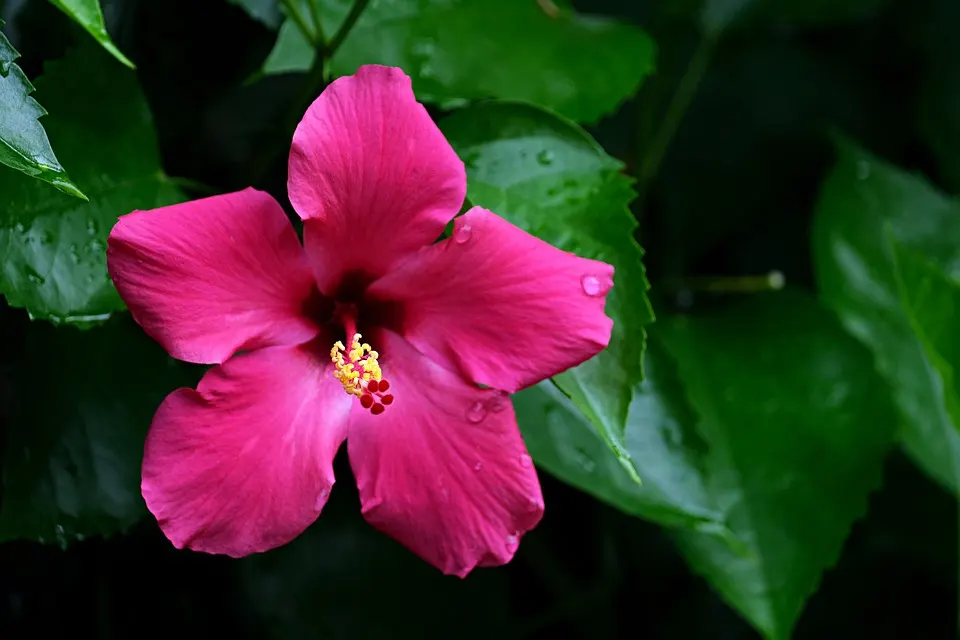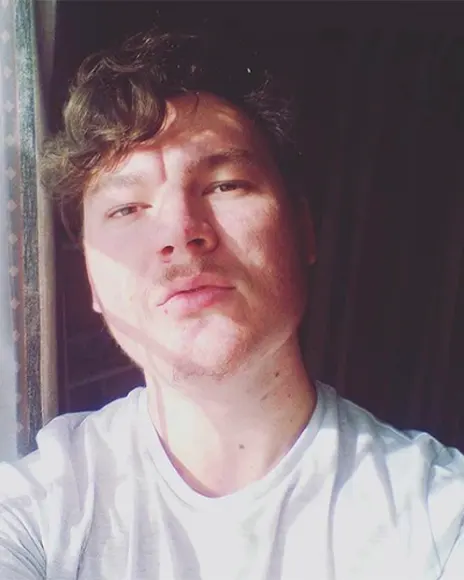What's Wrong With My Hibiscus Leaves?
Communication is one of the most basic functions any intelligent life force should possess. Every day, we engage in hundreds of examples of non-verbal communication. Every muscle movement in response to external or internal stimuli, every knee-jerk reaction, eye-roll and shrug, all of these are you trying to communicate with another being. Nature is no exception. After all, nature is the largest, most widely, and most intricately complex living being on this earth.
Nature is permanently communicating, whether we consider the complex and intricate web of communication between trees and shrubbery in the innermost sanctum of a vast forest through an interconnected network of mycelium or the way your plants communicate their needs to you. Because of this communication skill, plants are nowhere near as tricky as some people and garden blogs would have you believe.
Your hibiscus plant blossoming in your garden or sitting proudly as a bonsai on your mantelpiece is permanently talking to you. So take a metaphorical walk with me through the passages and words that follow as we decipher what your hibiscus is trying to tell you.
Yellowing Leaves on your Hibiscus Bonsai
Plant leaves yellow for many reasons. Basically, the yellowing of leaves is one of a plant’s last measures before it dies. If your hibiscus has yellow leaves, it could be getting too much water or not enough, receiving too much or too little sun, or its soil could be unsuitable to support healthy growth. Sometimes, hibiscus leaves start to yellow simply due to age.
With so many possible reasons why your hibiscus leaves might be turning yellow, how can you tell which one is the true culprit? This can be a little confusing and leave you doubting the capabilities of your green thumb. Luckily, sometimes you can tell the actual cause of your hibiscus’ yellow leaves by looking at how the yellowing started and where it’s localized.
Yellowing on One Side
If only one side of your hibiscus is starting to yellow, it’s likely due to overexposure to light. You can tell this for sure if the yellowing is localized to the side of the plant that gets the most sunlight. Even though green plants like hibiscus rely on sunlight for energy through photosynthesis, even this vital resource is harmful in the wrong quantities.
Apart from turning leaves yellow, overexposure to the sun’s harsh rays can completely bleach and even burn plants. If your hibiscus is planted or potted somewhere sunny and you see light, almost white patches on its leaves, move it immediately. In excessively high doses, the sun can turn the top leaves of your hibiscus white and even burn them to a shriveled brown crisp.
Unfortunately, there is no natural remedy for leaves that have been yellowed, bleached, or burnt in the sun. No matter how much love, attention, water, and cool air you give your plant, the affected leaves will likely not go green again. Eventually, these leaves will fall from your hibiscus and become nutrients for the rest of the plant that survives or microorganisms in the soil that break down decaying biological matter.
The best thing to do is remove the affected leaves and move your plant somewhere it won’t get scorched further. Even for sun-loving plants like hibiscus, the ideal spot is somewhere that receives filtered light as opposed to direct sunlight, especially in the world’s warmer climates where temperatures average around scorching.
Yellow Leaves with Green Veins
You’d be forgiven for thinking this was some kind of beautiful hibiscus mutation. The leaves of your hibiscus will be predominantly yellow, save for the delicate system of veins throughout the leaf, which will remain green. This is a clear sign of insufficient nutrients. Because nutrients and minerals favor new growth over the older parts of the hibiscus plant, you’ll see this most noticeably on larger, older leaves. You may also see small brown spots toward the extremities of the leaf; these are an indication that the leaf is already dying.
Some horticulturists can tell what nutrient is missing by examining the pattern visible on the affected leaves. But you don’t need to be a career plant buff to know what’s gone wrong with your hibiscus’ nutrient levels. All you need is a soil test kit. A good test kit will tell you what nutrients are missing from your soil so that you don’t have to stumble around in the dark.
Consider also getting a pH kit to test the acidity or alkalinity of the soil your hibiscus is planted in. You can then add any nutrients your hibiscus is missing and simultaneously lower the pH of the soil by adding sulfur. This will also make the nutrients you add more available to your hibiscus.
Predominantly Yellow and Soft
Overdoing your fertilizer duties can do much more harm than good. We have this idea that if a little is good, more must be better, but often the opposite is true. Everything needs to take place in moderation. Plants like your hibiscus are not built to deal with overexposure to anything. They have evolved over millions of years to thrive in particular climates, which is why we have to pay such close attention to specific plants’ water and light requirements. Fertilizer is a similar story but kicked into high gear.
Nitrogen, potassium, and phosphorus each perform a specific set of tasks within your hibiscus and are found in abundance in the natural world. Sometimes, however, your soil isn’t rich enough in these ingredients to support thriving life. In these cases, you’ll need to use fertilizers rich in these ingredients to regulate your growing medium and give your hibiscus plant a kickstart for the growing season.
Fertilizers are compounds specially formulated to bring out the best in your plants. Most fertilizers contain the sacred trinity of plant care; nitrogen, potassium, and phosphorus. You can find these three in different concentrations, but for hibiscus, any kind of slow-release formulation should do the trick. And even if you have the perfect fertilizer, you need to follow the usage instructions and not expose your hibiscus to too much of any core ingredient.
Fertilizers contain soluble salts. Salt naturally draws water out of its environment, in this case, your struggling hibiscus. Water loss from soluble salts has a massive adverse effect on the health of your hibiscus plant. You’ll likely experience some confusion because you’ll be watering your plant as you usually do. Still, because of the excess fertilizer and thus excess soluble salts, your plant won’t benefit from the water as it usually does. This will leave your plant deprived of some vital nutrients, drowning in others, and looking all kinds of unhealthy in shades of yellow.
Another way fertilizer can destroy your hibiscus is by direct contact with the leaves. Foliage fertilizer burn does not affect all plants equally, but hibiscus leaves do not like coming into contact with fertilizer. The best way to avoid this would be to ensure you don’t accidentally spill any fertilizer on your hibiscus’ foliage. Water your plant after you’ve fertilized it and ensure that you use slow-release organic fertilizers.

Lace-like Patterns
The natural world is full of little critters that feed off plants. While most of the worst sort of insects mainly attack fruits and vegetables, there are numerous creatures that will be just as happy taking bites out of your hibiscus. Any critter that feeds off another organism’s vital parts does great harm. Insects that feed off your hibiscus are no different. By attacking the stalks, stems, leaves, and roots of your hibiscus, these insects are sucking your plant dry of nutrients and eradicating any chances it has of replenishing them by destroying vital structures.
Some insects present as rust-colored residue on your hibiscus’ stems; others look like little white growths or even camouflage as green scales. But these critters aren’t limited to those within the visible spectrum. Some creatures, like leaf borers, are practically invisible because of how small they are. Leaf borers eat their way around the inside of your hibiscus’ leaves, leaving trails where the plant matter is now structurally compromised. This damage causes your plant’s leaves to look a little like yellow lace, with intricate patterns on their surface. But over time, this intricate lace will turn deadly as your plant is starved of all vital nutrients and unable to photosynthesize.
The best way to deal with insect damage is to remove the affected part of the plant and dispose of it so it won’t spread. There are products that claim to be able to eradicate the infections, but sometimes these will cause further harm to your delicate hibiscus. Some insects are simply too much of a hassle to get rid of and can take years to be eradicated completely.
Yellow and Brown Patches
Patches and blotches are probably some of the most unsightly infections your hibiscus can have. This is most likely a sign of viral infection or disease. Viral infection is usually also accompanied by leaf deformation and flower discoloration.
There isn’t really a non-invasive and effective way to cure plants of viral disease, so the best is to remove the affected plant and basically put it in quarantine. Put your affected hibiscus into a different spot away from any other plants and ensure that the infection hasn’t spread anywhere else in your garden. Once you’re sure you’ve got all the infected plants isolated, you can start working on identifying the infection.
Various viral infections are remedied differently. Some are manageable and may require fungicides. Still, others may require removing and disposing of the entire plant. If there is a section of the plant that isn’t affected, for instance, a healthy branch or stem, you may have some success removing it and trying to propagate it. Luckily, propagation by cuttings is relatively straightforward.
Make sure you cleanse any implements you use on the infected plant so that you don’t spread the infection any further.
One or Two Yellow Leaves
Your hibiscus might simply be going yellow because it’s getting old. Plants tend to live for a long time, with most having ways to propagate themselves and spread, but they don’t typically live forever. Some of their leaves will start turning yellow and falling off as plants age. This is completely natural and to be expected and shouldn’t cause you any concern.
The beauty of plants like hibiscus is that parts of the plant will die off in succession and be replaced by new growth. So you are unlikely to lose the entire plant; it’ll just replace its old bits and pieces every now and then.
Yellow and Wilting
This specific malady might present like any of the others. Thirsty plants sometimes try a few different communication tactics before succumbing to their mortality. Keep an eye on your hibiscus and make sure you water it properly. Hibiscus doesn’t like wet feet, so you should plant them into soil that drains well. Clay-like soils are not suitable for hibiscus.
There’s a thin line between overwatering and underwatering. You will get into a watering rhythm after some time, but it does take time to get into a habit like that. Take note of where your hibiscus is planted. If your hibiscus is in the garden outside, it will likely need a little more water due to sun exposure. If it’s inside, or you’re growing a hibiscus bonsai, it might need less because it will be smaller and out of direct sunlight for a few hours.
The only real trick with knowing whether your plant is getting too much or too little water is checking the soil’s moisture levels. While there is specialized apparatus for measuring moisture levels, you can also just use your finger. Dip your finger into the soil, and if it’s bone-dry, you need to give your hibiscus a drink. If the soil is visibly wet, you might want to let the poor plant dry out a little before you water again. If your problem is water content, the yellow leaves should regain their lush green look once your watering schedule is suitable for the plant’s needs.

Final Word
The hibiscus in your garden or a bonsai pot on your mantelpiece is far more advanced than often given credit for. Even if it is alone and not connected to any other plants by roots or the underground mycelium web, your plant is constantly communicating. Take a closer look at your hibiscus every now and again, and now that you’ve read our guide on plant language, see if you can figure out what it needs.
Be sure to follow instructions for any additives you apply to your hibiscus or feed into its soil. Also, make sure that anything you give your plant is suitable for hibiscus. Give your plant the nutrients it needs, and it’ll reward you ten-fold with beautiful blooms and vibrant foliage.







